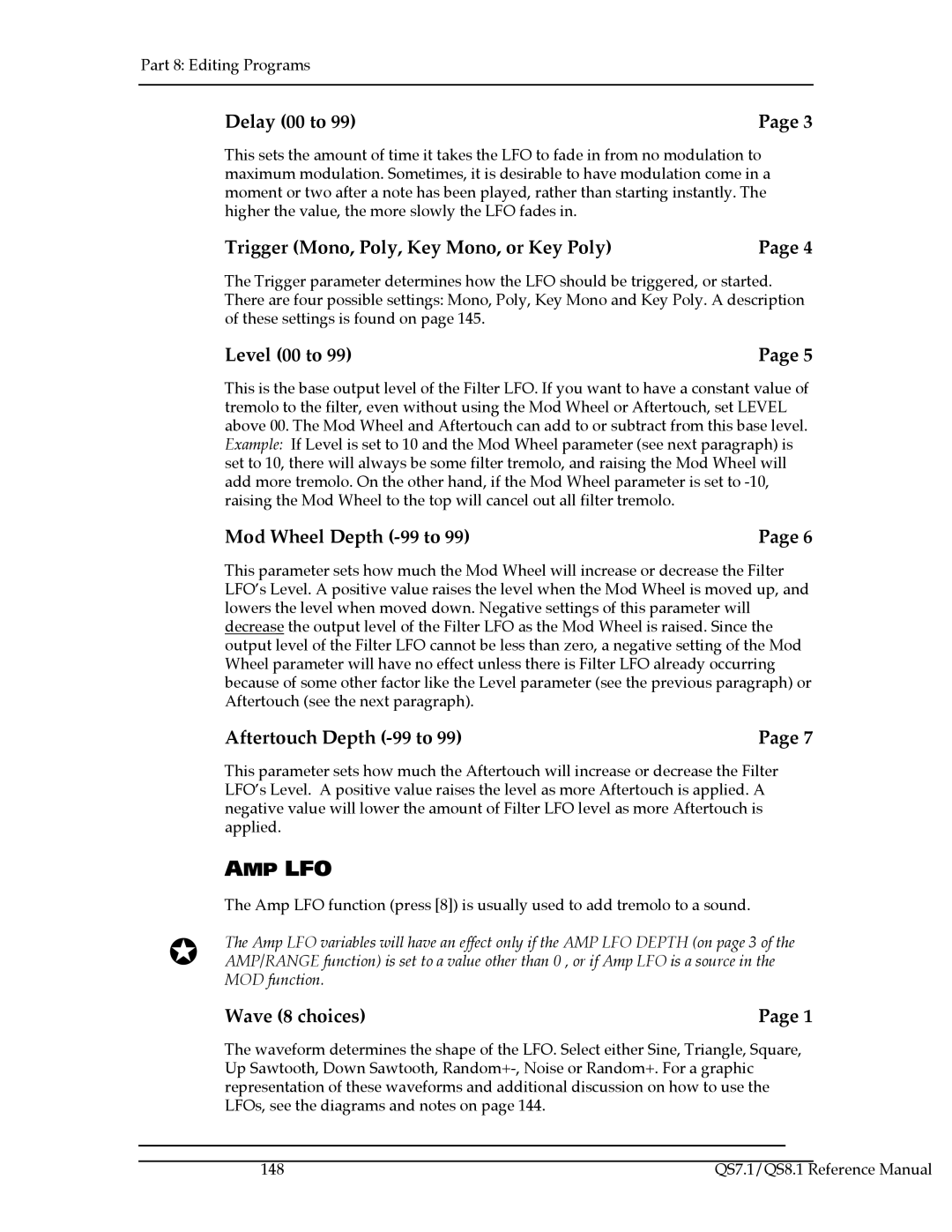
Part 8: Editing Programs
Delay (00 to 99) | Page 3 |
This sets the amount of time it takes the LFO to fade in from no modulation to maximum modulation. Sometimes, it is desirable to have modulation come in a moment or two after a note has been played, rather than starting instantly. The higher the value, the more slowly the LFO fades in.
Trigger (Mono, Poly, Key Mono, or Key Poly) | Page 4 |
The Trigger parameter determines how the LFO should be triggered, or started. There are four possible settings: Mono, Poly, Key Mono and Key Poly. A description of these settings is found on page 145.
Level (00 to 99) | Page 5 |
This is the base output level of the Filter LFO. If you want to have a constant value of tremolo to the filter, even without using the Mod Wheel or Aftertouch, set LEVEL above 00. The Mod Wheel and Aftertouch can add to or subtract from this base level. Example: If Level is set to 10 and the Mod Wheel parameter (see next paragraph) is set to 10, there will always be some filter tremolo, and raising the Mod Wheel will add more tremolo. On the other hand, if the Mod Wheel parameter is set to
Mod Wheel Depth | Page 6 |
This parameter sets how much the Mod Wheel will increase or decrease the Filter LFO’s Level. A positive value raises the level when the Mod Wheel is moved up, and lowers the level when moved down. Negative settings of this parameter will decrease the output level of the Filter LFO as the Mod Wheel is raised. Since the output level of the Filter LFO cannot be less than zero, a negative setting of the Mod Wheel parameter will have no effect unless there is Filter LFO already occurring because of some other factor like the Level parameter (see the previous paragraph) or Aftertouch (see the next paragraph).
Aftertouch Depth | Page 7 |
This parameter sets how much the Aftertouch will increase or decrease the Filter LFO’s Level. A positive value raises the level as more Aftertouch is applied. A negative value will lower the amount of Filter LFO level as more Aftertouch is applied.
AMP LFO
The Amp LFO function (press [8]) is usually used to add tremolo to a sound.
✪The Amp LFO variables will have an effect only if the AMP LFO DEPTH (on page 3 of the AMP/RANGE function) is set to a value other than 0 , or if Amp LFO is a source in the MOD function.
Wave (8 choices) | Page 1 |
The waveform determines the shape of the LFO. Select either Sine, Triangle, Square, Up Sawtooth, Down Sawtooth,
|
|
|
148 | QS7.1/QS8.1 Reference Manual | |
